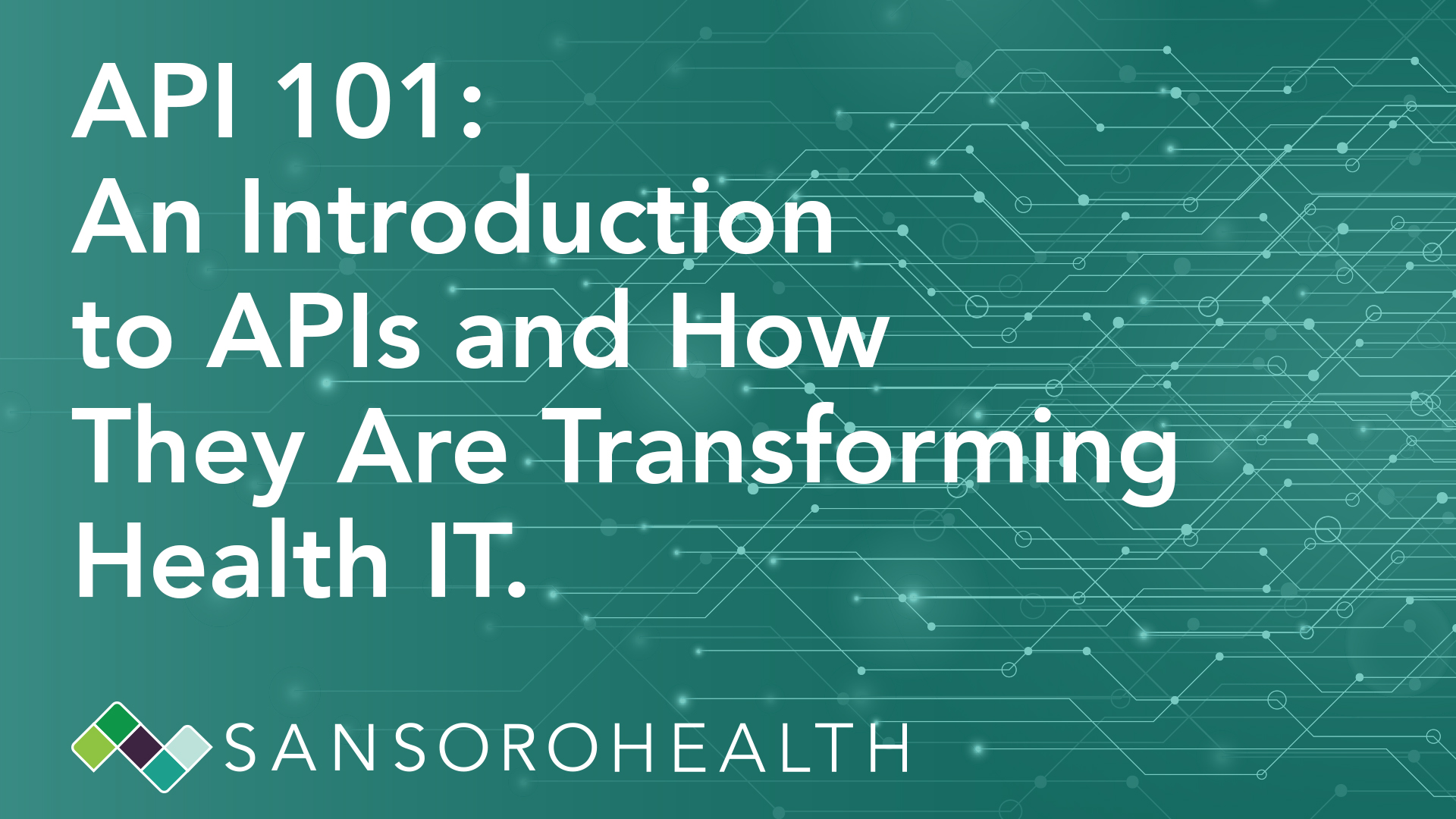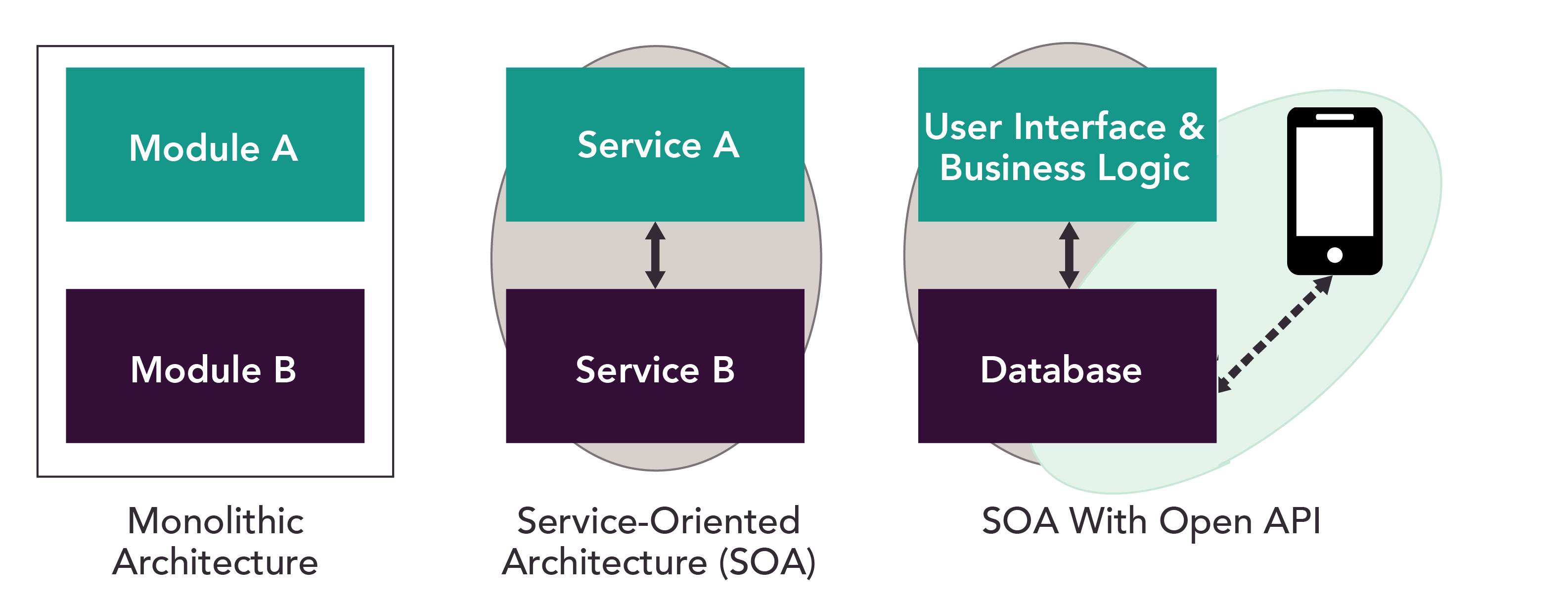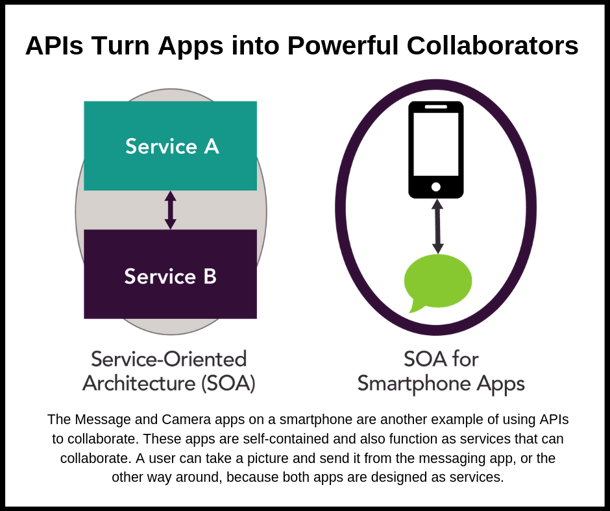
Join Our Webinar on May 22, 2019 at 12 pm Central!
API 101: An Introduction to APIs and How They Are Transforming Health IT
Webinar speakers and blog authors:
Wayne Kubick, HL7 CTO
John Orosco, CTO, Sansoro Health
Dave Levin, CMO, Sansoro Health
Application program interface (API) technology has transformed the digital economy and is now poised to do the same in health IT. The combination of the an increasingly robust HL7 Fast Healthcare Interoperability Resources (FHIR®) standard API and the rules proposed by ONC on interoperability will accelerate this trend. What should you know before diving in? Tune in to our live webinar on Wednesday May 22 at 12pm CT.
APIs allow software applications to connect, communicate and collaborate through a combination of web services. This harnesses the power of internet “backbone” communication protocols to provide a secure channel for connecting two applications and standards like JSON and XML that provide data-interchange formats or “objects.”
APIs also allow businesses to collaborate more seamlessly. For example, businesses that ship packages via UPS can leverage the UPS API to easily track shipping status. This API hides the complexity of the UPS database and business logic. It’s an open API that is exposed to the world so almost anyone can use it. Simply register, learn how the API works and connect and your system can interrogate the UPS API, instantly retrieve the current status, and display it to your customers on your website or app.
Using an API approach offers numerous advantages, including:
- Neither application has to know the internal workings or data structures of the other. As long as they can speak “API,” what they do internally is their own business.
- The format is flexible and extensible, providing a path for future improvement while preserving backwards compatibility.
- The format can be read by humans and machines, increasing clarity while minimizing errors and the need for special codes, hardware, etc.
Services Oriented Architecture (SOA)
Underlying the move to APIs is a major shift in application design from dedicated, monolithic applications to a services-oriented architecture (SOA).

Monolithic applications are designed as a set of tight, self-contained modules with little or no interaction between them. SOA reimagines these modules as self-contained services that can communicate and collaborate with each other. Adding an open API further exposes these services to other outside applications.
Health IT has been migrating to SOA, and APIs will accelerate this move. One intense area of activity is with electronic health records (EHRs). Early EHRs were built in the era of monolithic design. Migrating to SOA makes applications like EHRs more flexible, while APIs extend core services and facilitate data exchange between the EHR and other applications. Making these APIs open further transforms systems like EHRs into platforms for innovation and lays the foundation for a flourishing, diverse healthcare app ecosystem.

The combination of service-oriented software architecture and robust, open APIs has made possible the transformation of huge swaths in the digital economy. They provide an agile, technical foundation for how we shop, manage our money, travel and socialize.
Healthcare Catches FHIR
Another important development for healthcare is the emergence of HL7’s Fast Healthcare Interoperability Resource (FHIR) – a standard API for clinical data exchange. HL7 FHIR is an ever-expanding set of capabilities developed via consensus and real-world validation that can greatly simplify the use of APIs in healthcare.
HL7 FHIR is built upon the concept of “resources” – any content that is exchangeable – which are used as building blocks that can be incorporated into existing systems. Resources must have a common definition and method of representation, a common set of metadata and a human readable part. With FHIR, each resource is associated with a unique identifier, making it possible to access the right information from any application or device. This allows developers to build more user-friendly applications that benefit from fast, reliable access to accurate data regardless of the EHR or application being used.
The new rules proposed by ONC explicitly mandate the adoption and use of API technology based on the HL7 FHIR specification. By mandating the use of the FHIR API, the new rule helps to ensure foundational compatibility and basic interoperability. This gives API technology suppliers (like EHR vendors) a clear set of standards to follow in order to fulfill the API requirement. It also ensures consumers of that API (like hospitals and health IT developers), have consistency when integrating applications.
APIs Enable Innovation and Enhance Clinical Outcomes
This approach moves healthcare closer to a “plug and play” approach to interoperability. The combination of HL7 FHIR and custom APIs provides a solid framework that balances the need for cutting edge development and experimentation with the desire to have a common, powerful standard.
The widespread adoption of APIs in healthcare will remove major technical barriers to innovation, enhance competition and agility, and ultimately produce more powerful and user-friendly applications. These applications represent the next generation of clinical decision support, population health, unified communications, precision medicine, artificial intelligence, and patient engagement. They will lead to better clinical outcomes and enhanced satisfaction for patients and providers alike.
Click here to see speakers' full bios and photos.
Visit the Sansoro Health website here.


